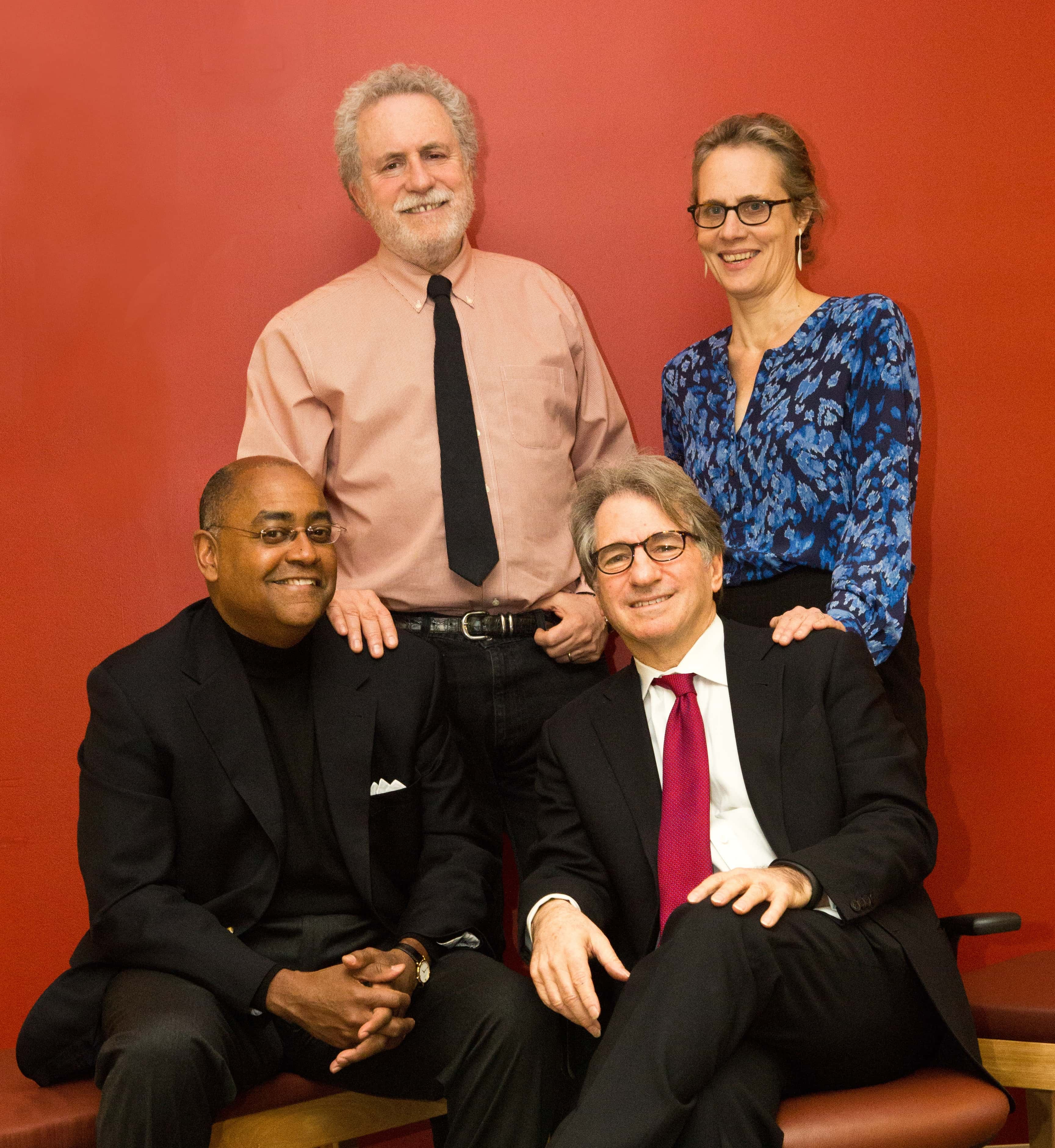“Sometimes, eyewitnesses make mistakes. Snitches tell lies. Confessions are coerced or fabricated. Racism trumps the truth. Lab tests are rigged. Defense lawyers sleep. Prosecutors lie.”—Barry Scheck and Peter Neufeld, Actual Innocence.
Whether you were around and watching the news in 1994 as the OJ Simpson trial played out, or you saw it all replayed in 2016 onscreen in American Crime Story: The People v. O.J. Simpson, you might be familiar with the “Dream Team”—the team of defense lawyers who represented Simpson during the lengthy and attention-grabbing trial. There were the chairs, Robert Shapiro and Johnnie Cochrane, and then, of course, F. Lee Bailey (known for his involvement in several controversial cases, including the Sam Sheppard re-trial and the Patty Hearst trial) and Robert Kardashian (likely now best known for his famous daughters). Among all these accomplished and already well-known figures on the Dream Team were two lawyers in charge of forensic and DNA evidence, Barry Scheck and Peter Neufeld. While they made a significant contribution to the Simpson trial—Neufeld successfully poked holes in the integrity of the blood trail between Nicole Brown Simpson's body and OJ Simpson's car—at that point in their careers, they were trying to make their mark in another arena: with a non-profit legal organization called the Innocence Project.
Regardless of your opinion on the ultimate outcome of the Simpson trial, it was an opportunity for Scheck and Neufeld to shine a light on their field of expertise: forensic and DNA evidence. In a pre-CSI world, they introduced the public at large to the importance of DNA evidence—something the Innocence Project relies heavily upon. Scheck and Neufeld started the organization in 1992 at the Cardozo School of Law at Yeshiva University. The Innocence Project, in their own words, “exonerates the wrongly convicted through DNA testing and reforms the criminal justice system to prevent future injustice.” A number of different departments operate in the organization to work towards improvement and reform, but what most people know the Innocence Project for is their efforts to exonerate innocent people.
 Getty Images OJ Simpson's Mug Shot
Getty Images OJ Simpson's Mug Shot
So, why does the Innocence Project consider this type of work so important? According to some studies, between 2.3 and 5% of all prisoners in the US are actually innocent of the crimes they’re serving time for. In 2013, there were 2,220,300 people incarcerated in the US—that would mean that between 51,067 and 111,015 prisoners at that time may have actually been innocent. It would be as if, one day, the entire population of Inglewood, California, or Cambridge, Massachusetts, were rounded up and imprisoned.
As disturbing as those numbers are, the list of common reasons behind many of the false convictions that have been overturned by the Innocence Project is even more chilling—chief among these is false eyewitness identification, which was a contributing factor to more than 75% of the wrongful convictions that were nullified by the organization. Unreliable forensic science, coerced false confessions, and inadequate legal counsel were other common factors in false convictions identified by the Innocence Project. Due to the overrepresentation of minorities and those of low socio-economic status in the incarcerated population in the US, around 70% of those exonerated are part of minority groups, and many of the clients taken on by the Innocence Project are poor and have exhausted their legal options. And of course, exonerating those falsely convicted isn’t just about freeing the innocent—around 40% of the time, DNA testing identifies the true culprit at the same time.
 Shutterstock
Shutterstock
It all began when Scheck, Neufeld, and a team of law students worked on the case of a man named Marion Coakley in the ‘80s. Coakley was convicted of sexual assault and robbery in 1985, despite the fact that he had an alibi—he’d been at a Bible study group hosted by his sister. On top of that, a last minute switch of public defenders left the lawyer who ultimately went to trial with him overworked and unprepared—a situation that was only exacerbated by a judge who wouldn’t delay the trial despite the substitution. The Legal Aid Society, who provided Coakley’s public defense, was in a bind—they wanted to appeal, but their argument rested on the fact that they’d given inadequate counsel to Coakley. To admit that would be a conflict of interest—so that’s where they brought in Scheck and Neufeld. While the pair didn’t have access to the newer methods of DNA testing, they did manage to clear Coakley’s name by December 1987.
After this victory, Scheck and Neufeld continued to concentrate on cases of wrongful conviction, culminating in the creation of the Innocence Project. One of the organization’s very first cases was a milestone—in 1993, when they cleared the name of Kirk Bloodstone, a former Marine who’d served eight years for murder and sexual assault, he became the first person to be sentenced to death and subsequently exonerated. Since then, the Innocence Project has claimed to be responsible for the overturning of 362 false convictions, although they continue work on hundreds more at any given time.
362 wrongful convictions overturned means 362 people set free who had valuable years of their lives taken from them, leaving a financial burden, not to mention an emotional and psychological toll as well. Beyond the work of exonerating those wrongfully convicted and crafting policy to reform the justice system, the Innocence Project also has a social work branch dedicated to supporting exonerees as they adjust to life after release from prison.
 Wikimedia Commons Innocence Project founders Barry Scheck & Peter Neufeld, executive director Madeline deLone, and board chair Senator Rodney Ellis
Wikimedia Commons Innocence Project founders Barry Scheck & Peter Neufeld, executive director Madeline deLone, and board chair Senator Rodney Ellis
Since the creation of the Innocence Project, they’ve taken on a number of well-known cases, but their work has also raised the profile of many of the cases they’ve chosen to take on. They did the initial work to clear Steven Avery of a conviction for sexual assault, attempted murder, and false imprisonment in 2003. Avery was arrested for the murder of Teresa Halbach in 2005, making him the only person exonerated by the Innocence Project to be charged with a violent crime after release. The case was the focus of the popular Netflix documentary series Making a Murderer, and in the series, the attention drawn to Avery’s 2003 exoneration by the Innocence Project is speculated to have played a role in his 2005 arrest—it’s even speculated that Avery had been framed as a retaliation.
The Innocence Project has become a household name for those interested in cases of wrongful convictions and DNA exonerations. In the first season of the popular podcast Serial, the host appeals to the Innocence Project to take on the case at its center; it’s been mentioned in legal dramas like Suits and The Good Wife (where Scheck actually appeared as himself); and the 2010 critically acclaimed film Conviction was based on one of the Innocence Project’s successes. As the name spreads, demand for aid increases; every year around 3,000 prisoners write to the Innocence Project hoping for help, and at any given time, the organization is evaluating between 6,000 and 8,000 potential cases for representation.
While us laypeople who watch too many crime dramas tend to think of the world of investigating crimes as static—the classic Law & Order combination of DNA evidence, shaky alibis, and a lineup done from behind a double-sided mirror—it’s actually a constantly evolving science. Previously held beliefs about the reliability of certain forensic sciences have been proven to be subjective, DNA testing becomes more sophisticated every year, and eyewitness accounts are proving to be less and less trustworthy. Unsurprisingly, as a result, 2018 was a record year for exonerations by the Innocence Project—they helped overturn the convictions of nine people, the most in the organization’s history. As the science continues to evolve, it’s clear that the organization will continue to make an impact on not only the criminal justice system, but the many people whose names they help clear and the families they reunite them with.
 Shutterstock
Shutterstock









